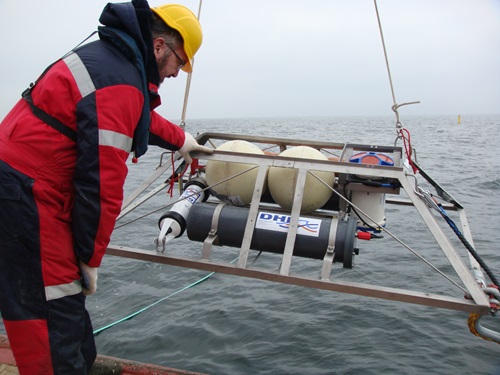Dr Ida Brøker, Head of Coastal and Estuarine, DHI, has been chairing the working group appointed by the Environmental Committee of CEDA. The group is made up of 10 experts from six nations – Dr Ulrik Lumborg, Senior Geographer from our Coastal and Estuarine department, also shared his expertise.
Titled ‘Environmental Monitoring Procedures’, the paper explains why and how environmental monitoring is undertaken. It includes general information on the principles of environmental monitoring during the stages of a dredging project, commonly used terminology, and presents lessons learnt from five major projects involving comprehensive dredging. One of the case studies highlighted in the paper is that of the Fehmarnbelt project, where DHI was selected as the environmental consultant.

|
|
Deployment of a bottom mounted wave and current meter for the Fehmarnbelt project,
one of the highlighted case studies in the Information Paper.
|
‘Environmental monitoring is undertaken to establish an understanding of baseline environmental conditions’, says Dr Ida Brøker. ‘It also assesses the level and compliance of environmental change caused by dredging in relation to agreed environmental thresholds and quality standards.’
‘Monitoring is a pre-requisite for adaptation and optimisation of dredging operations in the interest of the environment, the project owner and the contractors. We hope the paper will inspire all parties involved in dredging-related projects to design relevant and sufficient monitoring programmes.’
Click here to assess the paper.